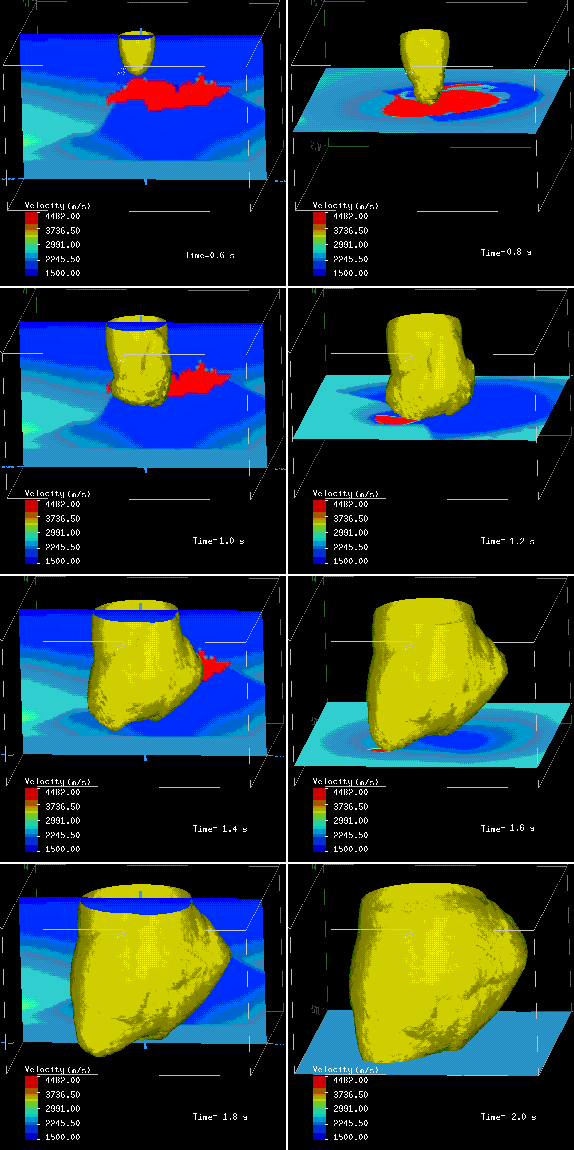




Next: Spherical versus Cartesian
Up: Alkhalifah: Traveltimes in the
Previous: The SEG/EAGE salt dome
To appreciate the effect that the salt body has on the wavefronts, I will show 3-D plots
of the wavefront ISO-surfaces, again using VIS5D, as they penetrate through the salt body.
The complex, yet continuous wavefronts include
body waves, as well as head-waves.
wavemov
Figure 5 Eight ISO-surface plots of the
wavefront at different times, along with the vertical or horizontal slice of the
velocity Field. The wavefront corresponds to a wave emanating from the source at the top.
The density plots are slices of the velocity field where the salt structure clearly
appears in the middle. The vertical velocity slice is kept in the same position, while
the horizontal slice of the velocity field is moved along with the wavefront.

Figure 5 shows the eight ISO-surface plots of the wavefront at
different times along with either a vertical or
depth slice of the velocity field. The wavefront expands with time and its shape alters from the typical
spherical shape as it penetrates through the salt body. The high salt velocity causes portions of the wavefront
to bulge and expand, especially those parts that have penetrated through the salt. The top flanks of this bulge are
dominated by the head-wave arrivals, which
smoothly connect the portions of the wavefront that penetrated through the
salt with those that traveled only through sediments. Clearly, these head-wave flanks have generally low curvature,
especially along the vertical plane,
indicative of their low amplitude. The low curvature of head-waves in the Cartesian coordinates
will translate
to high curvature in the polar coordinates. As mentioned above
and by Alkhalifah and Fomel (1997),
propagating high curvature waves is a weakness
of the fast marching approach, especially when propagating
diagonally with respect to the coordinate system.
As a result, head-waves traveltimes, as we will see later, will include large errors in
spherical coordinate
implementation of the fast marching method.
The bottom flanks of the wavefronts in Figure 5 also have low curvature on the vertical plane.
This portion of the wavefront corresponds to waves that traveled through the high velocity salt, and as a result experienced
a lot of spreading. These flanks also replace another, but more important, solution of the Eikonal equation, waves traveling
directly from the source, without going through the salt. These waves, however, arrived
a little later, and as a result
were discluded from the finite-difference solution of eikonal equation solution. Such arrivals and their implications will be discussed further
in the head-waves and first arrivals section.





Next: Spherical versus Cartesian
Up: Alkhalifah: Traveltimes in the
Previous: The SEG/EAGE salt dome
Stanford Exploration Project
7/5/1998
